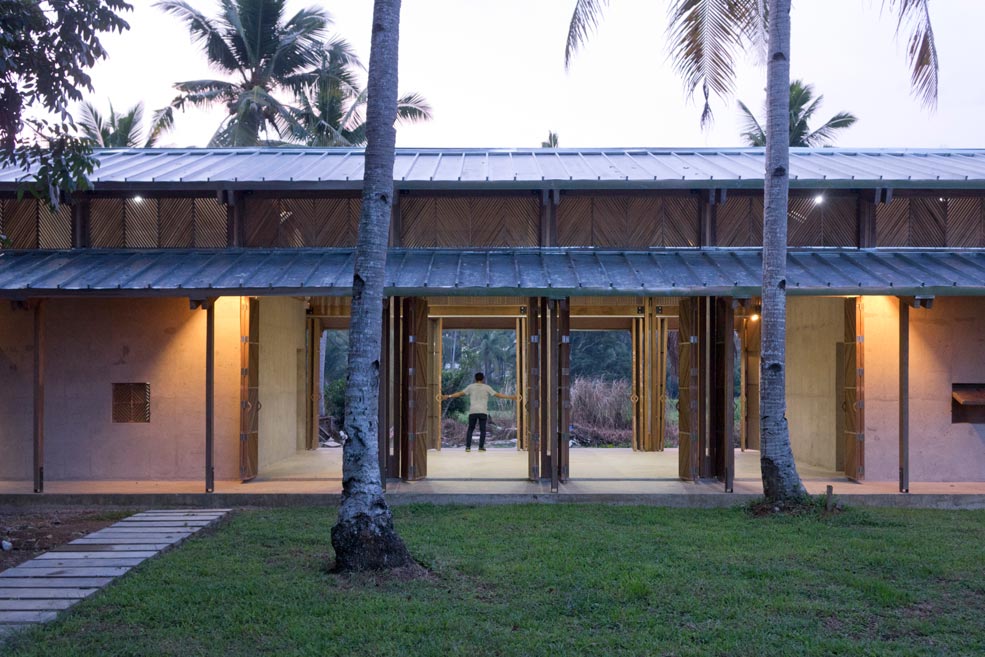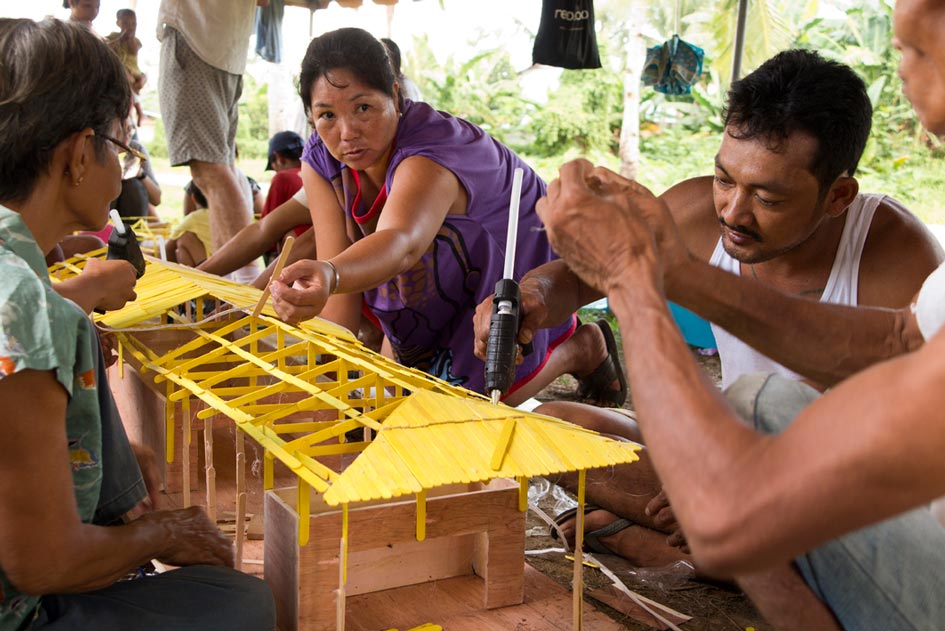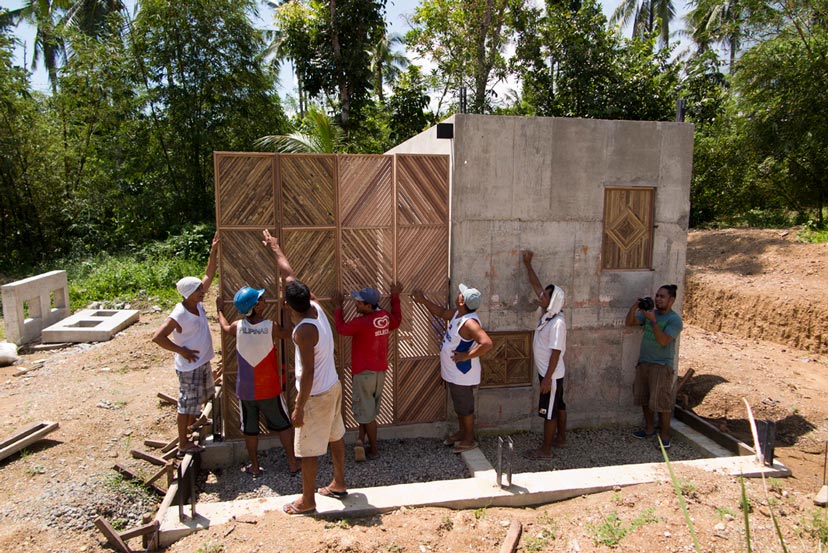
Furunes + Locsin’s Streetlight Tagpuro qualifies for WAF Building of the Year
Berlin, 16 November 2017 – Streetlight Tagpuro in Tacloban, Philippines, won the Civic and Community Completed Building category on Day 1 at the World Architecture Festival (WAF). This gives winning team Eriksson Furunes + Leandro V. Locsin Partners a shot at WAF’s ultimate prize, in addition to their try at a second win in the Small Projects category on Friday, 17 November 2017.
To compete for the WAF’s coveted Building of the Year award, architects Eriksson Furunes and Sudarshan Khadka of Leandro V. Locsin Partners will present their project, the Streetlight Tagpuro orphanage and community center in Tagpuro, Tacloban, tomorrow before a live audience and ‘super-jury’ against competitors:
• Heneghan Peng Architects, who won in the Culture – Completed Buildings category for their design of a limestone-clad museum on the campus of Beret University, near Ramallah on the West Bank;
• Alison Brooks Architects, who won the Display – Completed Buildings Display category, for the Smile, a temporary installation for the London Design Festival;
• Magi Design Studio, Health – Future Projects category, for their Desa Semester philanthropic rehabilitation center focusing on the final stage of full mental health recovery;
• Mark Koehler Architects for Superlofts Houthaven in Amsterdam, which won the Housing – Completed Buildings category supported by GROHE;
• China University of Hong Kong for their post-earthquake reconstruction of Guangmine village, which won the New & Old – Completed Buildings Category.
• Slash Architects and Arkizon Architects for The Farm of 38° 30°, Production, Energy & Recycling – Completed Buildings;
• Andrew Burges Architects, winner of the School – Completed Buildings category for their East Sydney Early Learning Centre;
• HKS Architects winner of the Sport -Completed Buildings category for the U.S. Bank Stadium, Minneapolis;
• Vo Trong Nghia Architects, who won the House – Completed Buildings award for Binh House in Ho Chi Minh City, Vietnam.
The complete list of competing teams for the Building of the Year award will be known at the end Day 2 of the WAF, when the winners of today’s live crits are announced. All the category winners will then present their projects on Day 3 before a super jury composed of:
• Ian Ritchie, Founder of Ian Ritchie Architects,UK
• Christoph Ingenhoven, Founder of Ingenhoven Architects, Austria
• James Timberlake Principal Kieran Timberlake, USA
• Ellen van Loon, Partner OMA Netherlands
• Wong Munn Summ, Founder WOHA, Singapore

Complete surprise at the win
Eriksson Furunes and Sudarshan Khadka presented their project Wednesday at the 3:40-4:00 PM slot. And while the judges’ reactions were very encouraging, the two didn’t think they stood a chance so they left the festival grounds at around a half past five in the afternoon. Says Khadka: “We watched Neri and Hu and also Idris Khan’s sculpture at the UAE. After we watched those, we felt like, ‘We don’t have a shot here,’ and so we got a little bit sad, and we said, ‘Sige, let’s go home and relax, and let’s drink!”
Furunes explains: “Well, we were tired too, and it was nice to have a whiskey at the end of a long day.”
The two had had a long day indeed. Khadka had just flown in from Nepal, and when he and Furunes got together in Berlin two days before the festival, they spent the time rewriting their presentation script. Up until the hours just before their presentation, the two refined their script, practiced what they would say and who would answer what, based on feedback the Locsin firm had received from an audience of architects at a dry-run and send-off party BluPrint and Grohe held for the Filipino finalists in Manila last October 26.
What stood out
While their competitors had gorgeous visuals, walkthroughs, and flythroughs, what must have caught the judges’ attention was the design process the architects employed to design and rebuild Streelight Tagpuro, an orphanage and community center in Tacloban run by NGO Streetlight, which was devastated by a Typhoon Haiyan (Yolanda) in 2013.
Says Khadka: “Even when we were making the boards (for submission to WAF), we said it had to be about two things—the process and the project.”

At the end of their presentation, the lead judge, Chad Oppenheim of Oppenheim Architecture and Design took a deep breath and let out a long sigh and said, “Thank you for that very dense, very powerful presentation,” he said. “It was a most interesting project and the design process quite beautiful.”
Much of the Q & A was spent talking about the people of Tagpuro—how they reacted to the design process, to what extent their inputs were used in the final design, and how they felt about inputs that weren’t used. For example, everyone had an opinion about the window and door design, apparently, but in the end, the community decided they wanted a diamond design. They initially also wanted a Mediterranean-type of structure with columns and capitals. The architects endeavored to find out what those forms meant to the people; and in the discovery and analysis process, the people understood they could achieve what those foreign forms stood for in forms and materials that were relevant and easily obtainable in their area. Finally, the judges inquired after the people of Tagpuro after the project was completed and wanted to know what things, if any, they took away from the experience of designing and building the orphanage and community center. They appeared delighted to find out, for example, that the men who worked on the building have since been gainfully employed as carpenters and used the building techniques they learned in the construction of their own homes.

A key aspect of the design process that impressed the judges was the painstaking back-and-forth consultation and workshops the architects undertook to uncover what the members of the community wanted and needed—three years of ideation, modeling, prototyping, and testing of ideas that would have sent less committed architects running in the opposite direction in less than half the time.
Furunes explained to the judges that the slow process was a good thing—slow was exactly what the people of Tagpuro, whose world had just been upended, needed. “When you lose your home, when you lose your family, when you get relocated, your life changes very fast.” The process needed to be slow so the people could understand, come to terms, participate, and “embrace the project as truly theirs.”
Quixotic
Khadka estimates some 8,000 man hours were consumed by the workshops alone.
That Khadka’s boss, Andy Locsin, agreed to do the project pro bono and funded all the site visits for a period of three years is what has made working at Leandro V. Locsin Partners so rewarding, says Khadka.
When Locsin found out about the win, he sent this message to Khada: “That’s the quixotic streak in our DNA… the resolve to prove that integrity, thoughtfulness, and doing things for the right reasons make sense—that goodness and generosity count for something, and that the good guys sometimes win! Hope you continue and carry that into your professional life. Those folks in the Tacloban community deserve every bit of collaborative design recognition and thanks. Please be sure that message carries through, especially to them!”
For his part, Furunes acknowledged project engineer Jago Boase and the bayanihan spirit of the Tagpuro community, friends, and colleagues who selflessly poured time and resources to see Streetlight Tagpuro through into being.

Missed Day 1 Winners’ Dinner
Furunes and Khadka may have missed last night’s Winners’ Dinner, but here’s hoping they—and WTA Architecture and Design Studio—get to join Friday night’s gala for the winners. Furunes and Khadka’s presentation for the Small Projects category is on Friday at 11:00 AM and their bid for the Building of the Year at 11:50 AM (6:00 and 6:50 PM, respectively, Manila time). Results will be announced at the conclusion of the gala dinner, at around 9 PM (or 4 AM Saturday, Manila time).
WTA, meantime, is presenting their design for the Chapel of St. Benedict and St. Scholastica in Pambujan this afternoon at 3:40 (10:40 PM Manila time), and again on Friday to vie for the Best Use of Color Prize at 12:20 PM (7:20 PM Manila time). ![]()
In partnership with GROHE. GROHE is exclusively distributed by Wilcon in the Philippines.


